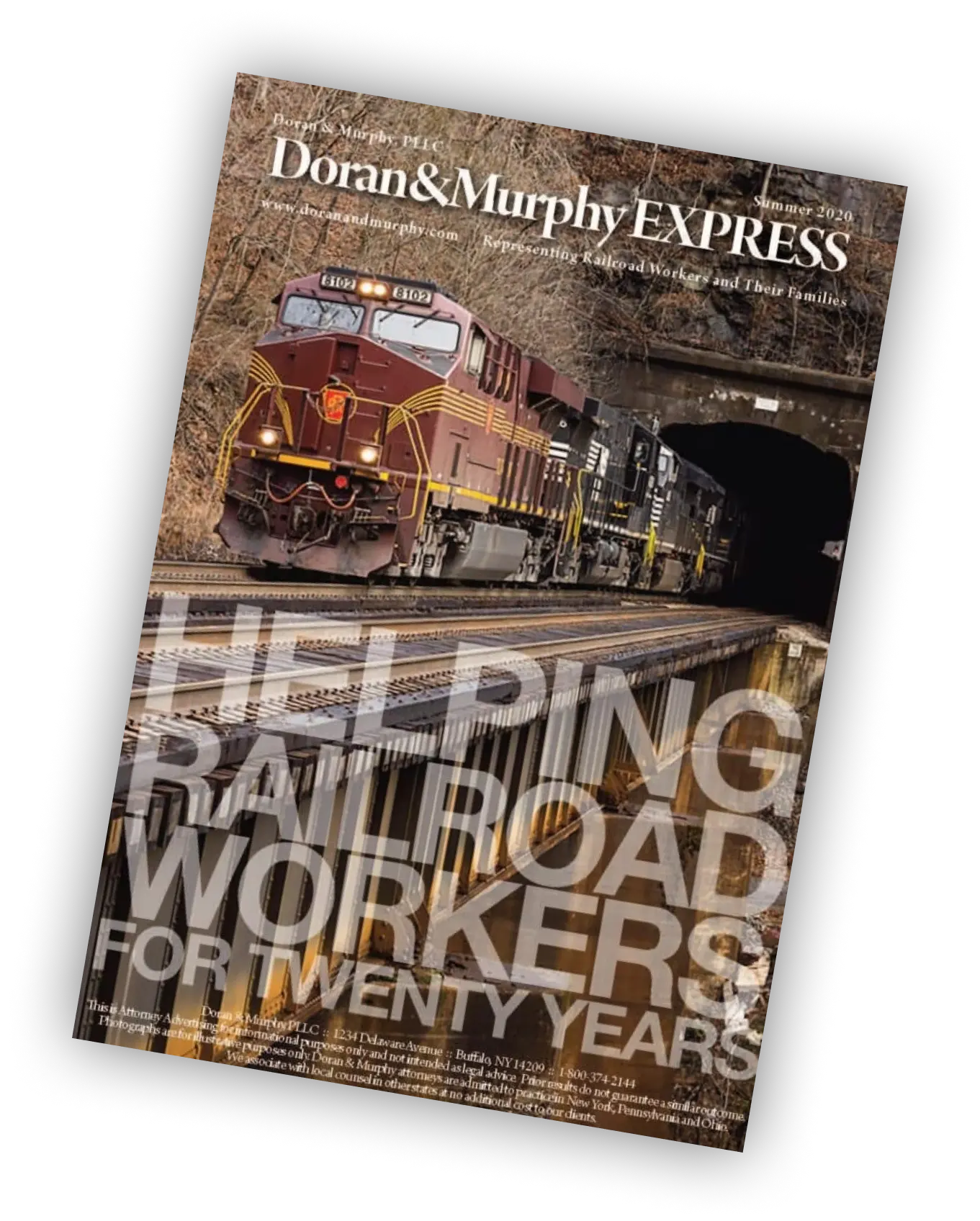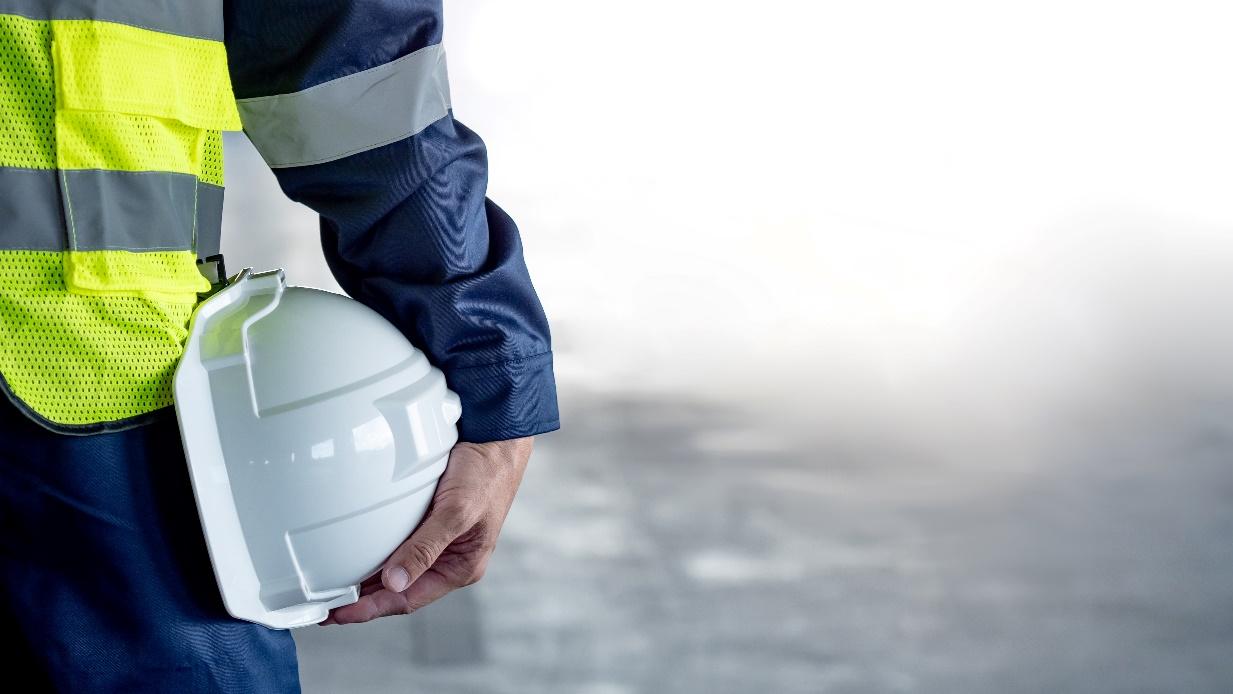Five years ago, OSHA clamped down on jobsite silica levels. The fate of millions depends on how well that’s working.
Last of three parts.
Telltale Dust
In the 1990s, the microscopic dust on railroad workers showed they were working in clouds of deadly silica. Despite measures to better protect them, many still are.
At one end of the spectrum in size, according to the environmental-solutions firm AMI Environmental, are rain, pollen, and the width of a human hair.
At the other end are tobacco-smoke particulates and viruses, which can be viewed only through an electron microscope.
And in the middle, visible under a conventional light microscope, are bacteria and fumes.
And crystalline silica dust.
That last one—the microscopic crystalline silica that’s raised by construction and industrial workers’ dumping, moving, grinding, crushing, or cutting silica-containing substances such as granite—can still be detected on the clothes and skin of railroad workers today, despite the U.S. Department of Labor’s realizing the dangers of silica nearly a century ago.
Five years ago, OSHA set new jobsite silica-dust levels. The new standards set a new action level, initiating certain required activities such as exposure monitoring and medical surveillance, upon detection at a job site of 25 micrograms per three cubic meters over an eight-hour shift. The updated standards also set a permissible exposure limit for workers of 50 micrograms per cubic meter per eight-hour shift over a 40-hour work week. This updated permissible exposure limit, or PEL, is OSHA’s determination of how much an employee can be exposed to silica without the risk of adverse health effects.
Level of compliance too low
OSHA’s new silica-compliance standards, which went into effect September 2017, lowered the allowable exposure level to silica on construction sites by 80 percent. Federal safety regulators have stepped up enforcement of the regulations at construction sites across the country, according to a recent analysis by Bloomberg BNA.
Anything above 25 micrograms is what is known as the “action level.” This is the level where work areas need to be assessed for potential health risks. The summary below lists some of the biggest silica regulation changes made:
- Businesses must restrict practices that expose workers to silica.
- Medical exams are compulsory every three years for certain workers.
- Workers must be thoroughly trained in how to limit silica exposure.
- A company must keep records of exposure measurements and medical exams.
The new OSHA standards were widely embraced but seen as insufficient in industries needing not only stricter rules but also a sweeping culture change. “The major reason silicosis is still a threat to worker health is not because the mandated exposure limit is too high, it is because of the level of compliance among industry is too low,” Mark Ellis, president of the Industrial Minerals Association, said in a press release.
Risky work
The U.S. Department of Labor realized the dangers of silica in the 1930’s, but the problem of occupational exposure to silica persists still today because various industries, including railroads, use materials that contain silica. More than two million people in the United States are exposed to respirable crystalline silica in the workplace, which increases the risk of lung cancer, silicosis, chronic obstructive pulmonary disease, and kidney disease.
One of the main ways railroad workers are exposed to silica is by the rocks around the track, called “ballast,” which are often made of silica-containing granite. The machines that the railroad workers use to maintain the tracks stir up the ballast, creating clouds of silica dust that can be breathed in by the workers. These machines include, but are not limited to, ballast regulators, ballast cleaners, track sweepers, cribbers, tampers, and spike pullers.
Railroad workers are exposed to ballast dust principally through track construction and repair, dumping ballast, and from ballast trains. Many of these workers operate heavy machinery that manipulate, groom and otherwise disturb railroad track rock called ballast, often creating clouds of silica dust. Most ballast is made of granite, which is up to 50 percent silica.
Beginning in 1990 and 1992, Health Hazard Evaluations were conducted by the National Institute for Occupational Safety and Health to determine the respiratory hazards faced by employees who maintain the track for Norfolk Southern Railroad and CSX Transportation, Incorporated. The NIOSH Health Hazard Evaluations were conducted in Nashville, Tennessee, and Manassas, Charlottesville, and Front Royal, Virginia. The investigators took personal and area samples from machine cabs and the skin, clothes, and equipment of employees to measure the concentrations of silica dust.
A significant number of the samples collected exceeded the OSHA Permissible Exposure Limit and NIOSH Recommended Exposure Limit for respirable dust and quartz.
If you have any questions about silica exposure or think you yourself may have been exposed, we may be able to help. Call us for more information.





